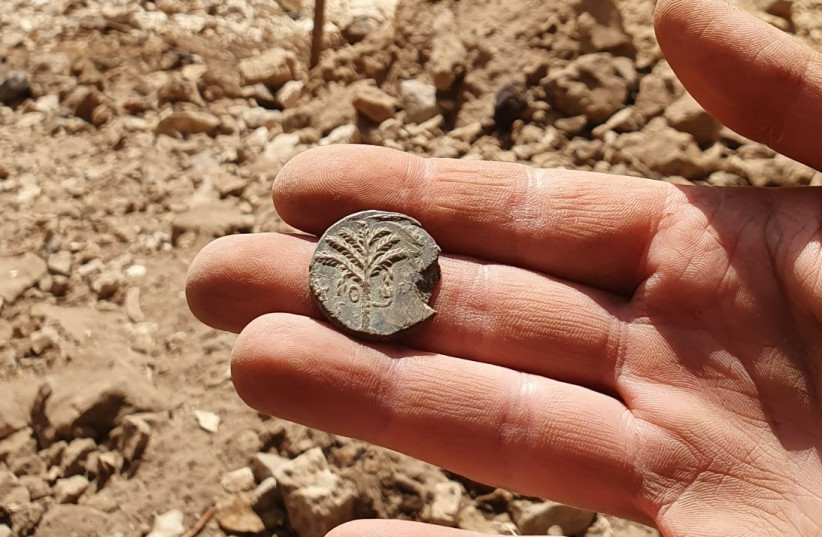King David, Elijah the Prophet and Rabbi Shimon Bar Yochai. What do these Jewish historical figures have in common? All three sought refuge in caves, hiding away from their literal or figurative enemies for days, months and years at a time.
I remember learning stories of Jewish figures hiding in caves as a child. Where I grew up in the swamp town of New Orleans, Louisiana, there were no geological formations whatsoever; I had never seen a cave in person. Back then, I imagined King David wandering through a forest, hiding away in an oversized cave with grey stone walls, something like the ones I had seen on television westerns. Perhaps in a cave that could have even doubled as a bear den.
I wasn’t completely sure how to visualize the story of King David, but there was one thing I did know: there were a lot more caves featured in the pages of Tanach than I had ever encountered on my terrain. As opposed to the land of the bible, my hometown was dominated by lush greenery, oversized magnolia trees and clusters of hanging Spanish moss.
It was only years later when I moved to Israel as an adult that I finally began to understand what biblical spelunking was all about.
Twenty minutes from my current home in Gush Etzion is Nahal Tekoa, a dramatic canyon that’s cradled by layers of mountains and hills. Amos, the prophet, lived in Tekoa. Later in the 4th century CE, a monk, Haritoun, established his monastery in this canyon, seeking silence in the many caves hidden in its ridges. The largest of the caves at the site has been dubbed Haritoun Cave. As I discovered by crawling through it, Haritoun is no ordinary cave. One could easily get lost in the four levels of this karstic cave, filled with hundreds of meters of tunnels and chambers. At Ma’arat Haritoun, one can begin to imagine the scope of Israel’s underground world hidden beneath the surface.


NEARBY IN the Jerusalem Foothills, an area known as The Land of a Thousand Caves is just as incredible. In this part of the country, it’s nearly impossible to walk along a hiking trail without passing a hidden opening into a world of mystery. Concealed by fig trees and stinging nettle, the caves in this part of the country contain many secrets. In some, there are long, chalky tunnels chiseled out by hand, their walls equipped with little nooks for placing oil lamps to light the way. Pieces of 2,000-year-old pottery litter the ground. In other caves, there are underground rooms with pillars, stairways and arches; some even house stables and columbariums for raising doves. Between the miles of tunnels, there are bell caves, cisterns and burial caves.
Some of these caves began as natural structures formed by water and shifting rock. Once discovered by humans, they became underground hideaways, most notably for Jewish rebels during the time of the Bar Kochva revolt. These men secreted themselves away in a dark world where they hid from Roman soldiers.
Past The Land of a Thousand Caves, the story continues. In the Judean Desert, from Nahal Darja to Qumran, there are plenty of caves where Essenes and other Jewish sects hid from the mainstream community. In the quiet of a cave, these people attempted to preserve a more elevated way of life, with a focus on asceticism and ritual purity. Treasure troves of ancient scrolls have been found in some of these caves. Here, too, King David hid from Saul in a cave at Nahal Arugot, a stream in the Ein Gedi Nature Nature Reserve, centuries earlier.
As I discovered as an adult, even the story of a spider weaving its web over a cave opening (like it did for King David) makes a lot more sense when confronted by the realities of Israel’s terrain. In Israel, some caves are inhabited by small animals and insects who use the dark, cool, chambers to escape from the desert sun at midday. How could a small spider completely cover the opening of a cave with its web? It’s not that difficult; many cave entrances are just large enough for a person to squeeze through. Although there are some with gaping, wide entryways, they are more typically small and just about unnoticeable, hidden behind fig branches that grow out of the moisture trapped within. You could walk right by one of these caves without ever knowing that there was a secret world underground.
I may not have had the faintest understanding of biblical stories about caves as a child or even when I moved to Israel two decades ago but throughout my years of living and hiking in the Holy Land, the stories of our people’s kings, prophets and warriors have come to life and the land reveals its ancient secrets.
The writer is Susannah Schild, creator of Hiking the Holyland (http://hikingintheholyland.com/). Her new book, From Southerner to Settler: Unexpected Lessons from the Land of Israel is hitting the shelves this month. (www.fromsouthernertosettler.com)
